In the growing market of compact SUVs, the battle between the Subaru Forester and the Toyota RAV4 has taken center stage. Both vehicles offer a blend of reliability, versatility, and performance, appealing to a wide range of customers. In this comparison, we will explore their technical aspects, innovations, and overall performance to help you decide which SUV reigns supreme.
Subaru Forester vs Toyota RAV4 – Which car suits you better?
Two cars, one duel: Subaru Forester meets Toyota RAV4.
Which one wins in performance, efficiency and value for money? Find out now!
Powertrain and Performance
The Subaru Forester is equipped with a 2.0L petrol MHEV engine, delivering a power output of 150 HP and generating a torque of 194 Nm. It features an automatic CVT transmission and an all-wheel-drive system, which enhances its capability on diverse terrains. With a 0-100 km/h acceleration time of 11.8 seconds, the Forester balances decent power with efficiency, achieving a fuel consumption of 8.1 L/100km.
On the other hand, the Toyota RAV4 presents a more robust lineup of engines, including a full hybrid and a plugin hybrid variant. The conventional full hybrid engine produces between 218 to 306 HP, depending on the configuration. Notably, the RAV4 can accelerate from 0-100 km/h in as quick as 6 seconds, showcasing its performance edge over the Forester in this aspect. Furthermore, the RAV4 boasts an impressive fuel consumption range of just 1 L/100km in its most efficient plugin hybrid variant, making it an economical choice for eco-conscious drivers.
Dimensions and Space
In terms of size, the Subaru Forester measures 4640 mm in length, 1815 mm in width, and stands at 1730 mm in height. It offers ample space, with a trunk capacity of 509 liters, enough for everyday needs and weekend adventures. With a curb weight ranging from 1658 kg to 1693 kg, it provides stability and safety without compromising on fuel efficiency.
The Toyota RAV4 slightly trails in length, measuring 4600 mm, but offers a broader width at 1855 mm and a slightly lower height of 1685 mm. Its trunk with a capacity of 580 liters proves advantageous for cargo space, especially for families. The RAV4's curb weight ranges from 1745 kg to 1910 kg, reflecting a different feel on the road but contributing to its performance dynamics.
Technological Innovations
Both SUVs come loaded with advanced technology, enhancing safety, comfort, and connectivity. The Subaru Forester integrates Subaru's EyeSight driver-assist technology, which provides features like adaptive cruise control, lane departure warning, and pre-collision braking. This focus on safety has earned it high ratings in crash tests.
Meanwhile, the Toyota RAV4 offers cutting-edge technology in its Toyota Safety Sense package, which includes automated emergency braking, lane tracing assist, and dynamic radar cruise control. The RAV4 also excels with its multimedia system, featuring a larger touchscreen display and seamless smartphone integration, making connectivity a breeze.
Environmental Impact
When discussing eco-friendliness, the RAV4's hybrid options take the lead. The RAV4's hybrids produce CO2 emissions as low as 22 g/km, showcasing Toyota’s commitment to reducing the environmental impact of their vehicles. The Forester, with a CO2 emission rating of 185 g/km, still offers good efficiency but lags behind in comparison to the RAV4 hybrids.
Conclusion: Which is Right for You?
Choosing between the Subaru Forester and the Toyota RAV4 ultimately depends on your priorities. The Forester stands out for its all-wheel-drive capabilities, excellent safety features, and spacious interior geared towards outdoor enthusiasts. However, the Toyota RAV4 seems to cater more to those who value hybrid efficiency, performance, and advanced technology.
Regardless of which vehicle you choose, both SUVs offer a dependable and enjoyable driving experience, backed by two of the best brands in the automotive market.
Here’s where it gets real: The technical differences in detail
Costs and Efficiency:
When it comes to price and running costs, the biggest differences usually appear. This is often where you see which car fits your budget better in the long run.
Subaru Forester has a slight advantage in terms of price – it starts at 34700 £, while the Toyota RAV4 costs 35100 £. That’s a price difference of around 429 £.
Fuel consumption also shows a difference: Toyota RAV4 manages with 1 L and is therefore clearly more efficient than the Subaru Forester with 8.10 L. The difference is about 7.10 L per 100 km.
Engine and Performance:
Power, torque and acceleration say a lot about how a car feels on the road. This is where you see which model delivers more driving dynamics.
When it comes to engine power, the Toyota RAV4 has a clearly edge – offering 306 HP compared to 136 HP. That’s roughly 170 HP more horsepower.
In acceleration from 0 to 100 km/h, the Toyota RAV4 is convincingly quicker – completing the sprint in 6 s, while the Subaru Forester takes 12.20 s. That’s about 6.20 s faster.
In terms of top speed, the Subaru Forester performs minimal better – reaching 188 km/h, while the Toyota RAV4 tops out at 180 km/h. The difference is around 8 km/h.
Space and Everyday Use:
Beyond pure performance, interior space and usability matter most in daily life. This is where you see which car is more practical and versatile.
Both vehicles offer seating for 5 people.
In curb weight, Subaru Forester is slight lighter – 1693 kg compared to 1745 kg. The difference is around 52 kg.
In terms of boot space, the Toyota RAV4 offers a bit more room – 580 L compared to 508 L. That’s a difference of about 72 L.
In maximum load capacity, the Subaru Forester performs hardly perceptible better – up to 1731 L, which is about 41 L more than the Toyota RAV4.
When it comes to payload, Toyota RAV4 to a small extent takes the win – 600 kg compared to 492 kg. That’s a difference of about 108 kg.
Who comes out on top?
Overall, the Toyota RAV4 shows itself to be dominates this comparison and secures the title of DriveDuel Champion.
It convinces with the more balanced overall package and proves to be the more versatile choice for everyday use.
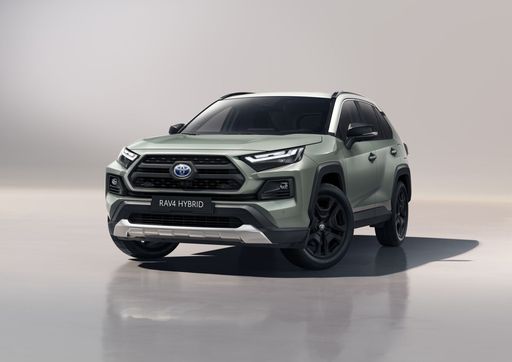 @ Toyota Motor Corporation
@ Toyota Motor Corporation
Toyota RAV4
Subaru Forester
The Subaru Forester is a versatile SUV known for its impressive off-road capabilities and practical design. With a spacious interior and advanced safety features, it offers comfort and security for both city driving and outdoor adventures. Its reliable performance and all-wheel-drive system make it a popular choice among those who appreciate a combination of functionality and rugged charm.
details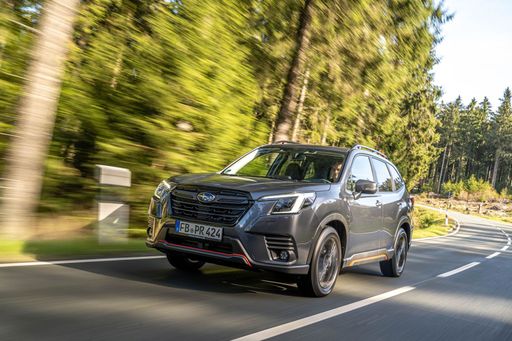 @ Subaru Corporation
@ Subaru Corporation
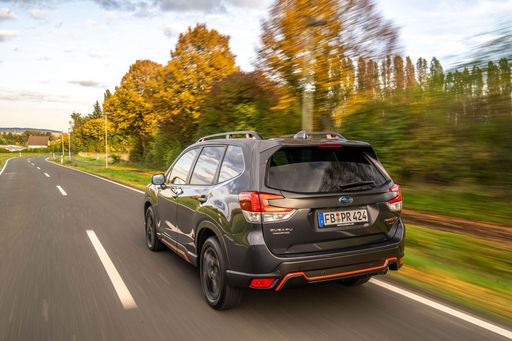 @ Subaru Corporation
@ Subaru Corporation
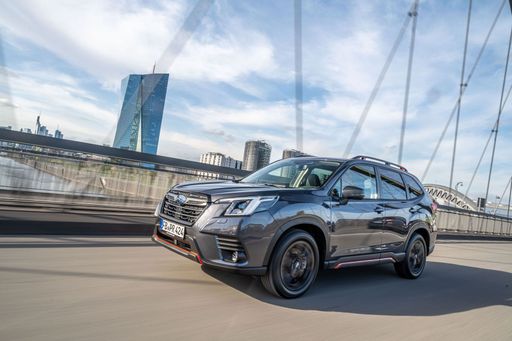 @ Subaru Corporation
@ Subaru Corporation
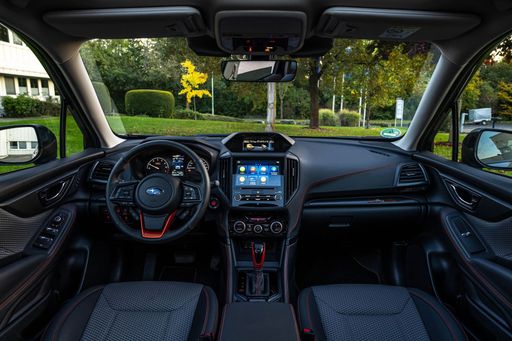 @ Subaru Corporation
@ Subaru Corporation
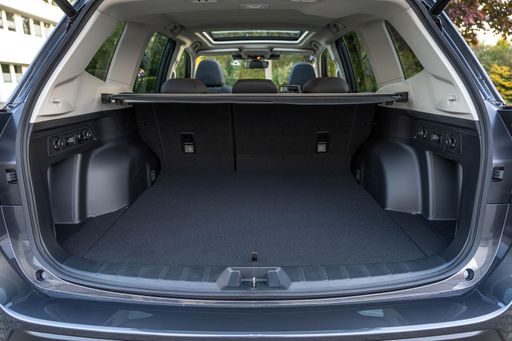 @ Subaru Corporation
@ Subaru Corporation
Toyota RAV4
The Toyota RAV4 feels like a sensible friend on the road, marrying dependable practicality with a dash of SUV personality that keeps daily driving from turning dull. Comfortable and easy to live with, it looks tough without shouting and quietly gets the job done — a sensible pick for buyers who want versatility without drama.
details @ Toyota Motor Corporation
@ Toyota Motor Corporation
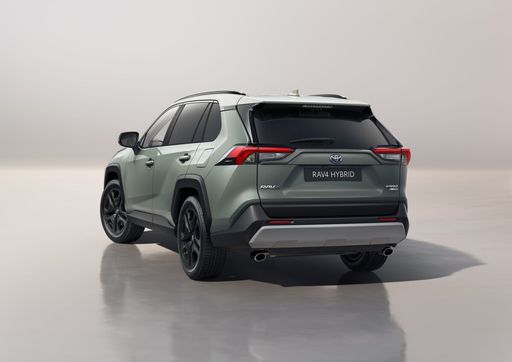 @ Toyota Motor Corporation
@ Toyota Motor Corporation
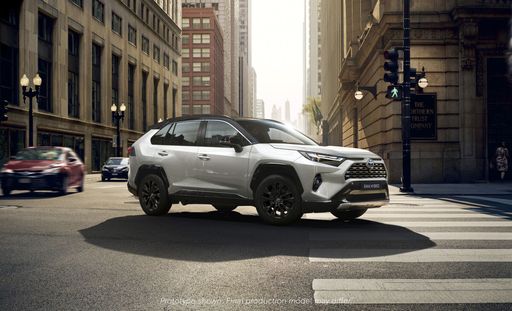 @ Toyota Motor Corporation
@ Toyota Motor Corporation
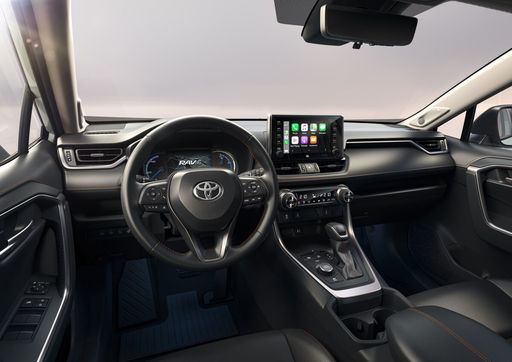 @ Toyota Motor Corporation
@ Toyota Motor Corporation
 @ Subaru Corporation
@ Subaru Corporation
|
 @ Toyota Motor Corporation
@ Toyota Motor Corporation
|
|
|
|
Costs and Consumption |
|
|---|---|
|
Price
34700 - 42200 £
|
Price
35100 - 55700 £
|
|
Consumption L/100km
8.10 L
|
Consumption L/100km
1 - 5.6 L
|
|
Consumption kWh/100km
-
|
Consumption kWh/100km
-
|
|
Electric Range
-
|
Electric Range
75 km
|
|
Battery Capacity
-
|
Battery Capacity
-
|
|
co2
183 g/km
|
co2
22 - 128 g/km
|
|
Fuel tank capacity
48 L
|
Fuel tank capacity
55 L
|
Dimensions and Body |
|
|---|---|
|
Body Type
SUV
|
Body Type
SUV
|
|
Seats
5
|
Seats
5
|
|
Doors
5
|
Doors
5
|
|
Curb weight
1693 - 1739 kg
|
Curb weight
1745 - 1910 kg
|
|
Trunk capacity
508 L
|
Trunk capacity
520 - 580 L
|
|
Length
4670 mm
|
Length
4600 mm
|
|
Width
1830 mm
|
Width
1855 mm
|
|
Height
1730 mm
|
Height
1685 mm
|
|
Max trunk capacity
1679 - 1731 L
|
Max trunk capacity
1604 - 1690 L
|
|
Payload
446 - 492 kg
|
Payload
390 - 600 kg
|
Engine and Performance |
|
|---|---|
|
Engine Type
Petrol MHEV
|
Engine Type
Full Hybrid, Plugin Hybrid
|
|
Transmission
Automatic
|
Transmission
Automatic
|
|
Transmission Detail
CVT
|
Transmission Detail
CVT
|
|
Drive Type
All-Wheel Drive
|
Drive Type
Front-Wheel Drive, All-Wheel Drive
|
|
Power HP
136 HP
|
Power HP
218 - 306 HP
|
|
Acceleration 0-100km/h
12.20 s
|
Acceleration 0-100km/h
6 - 8.4 s
|
|
Max Speed
188 km/h
|
Max Speed
180 km/h
|
|
Torque
182 Nm
|
Torque
-
|
|
Number of Cylinders
4
|
Number of Cylinders
4
|
|
Power kW
100 kW
|
Power kW
160 - 225 kW
|
|
Engine capacity
1995 cm3
|
Engine capacity
2487 cm3
|
General |
|
|---|---|
|
Model Year
2025
|
Model Year
2024 - 2025
|
|
CO2 Efficiency Class
G
|
CO2 Efficiency Class
D, B
|
|
Brand
Subaru
|
Brand
Toyota
|
What drivetrain options does the Subaru Forester have?
The Subaru Forester is available as All-Wheel Drive.
The prices and data displayed are estimates based on German list prices and may vary by country. This information is not legally binding.
